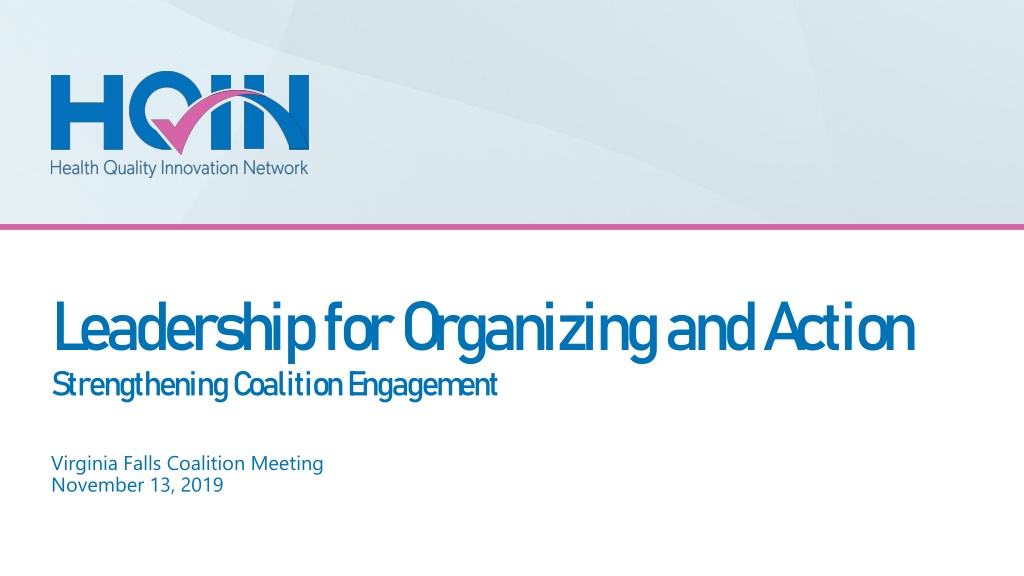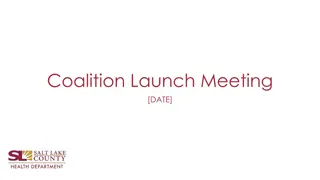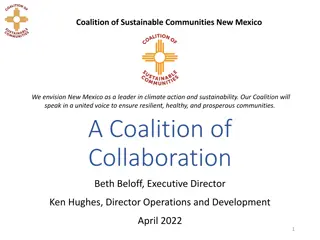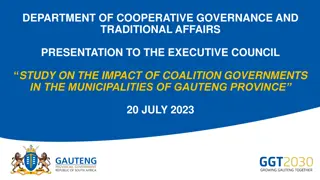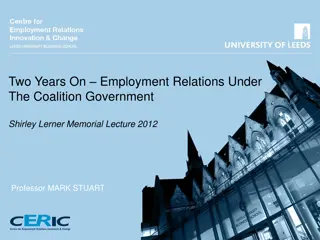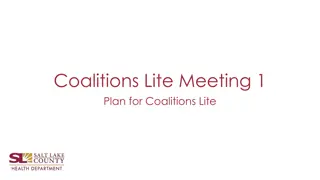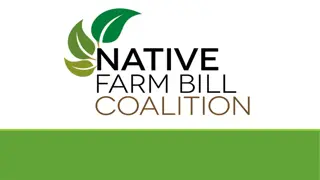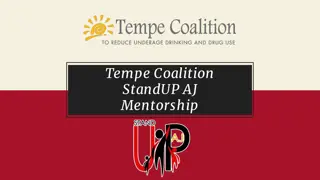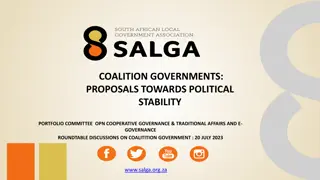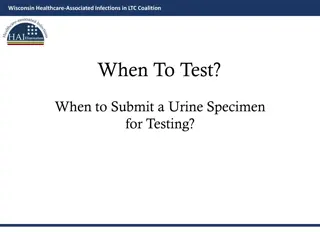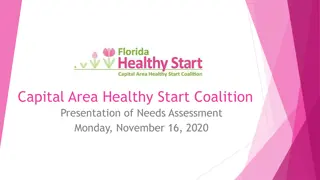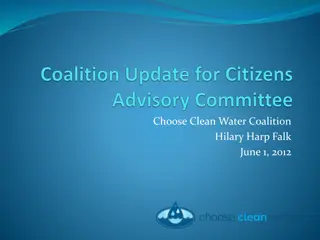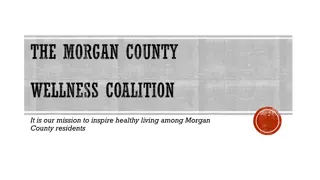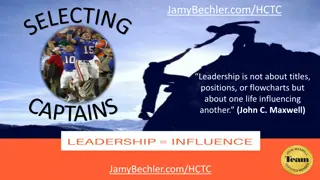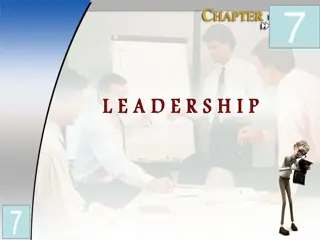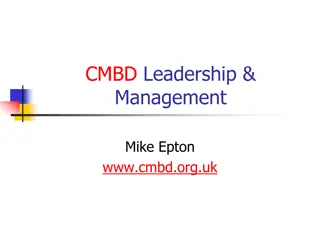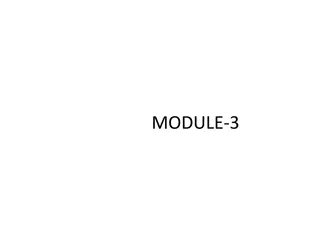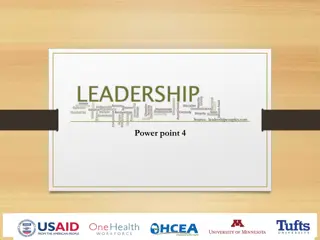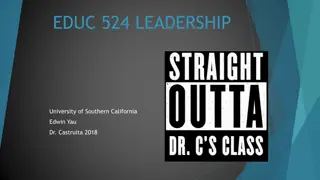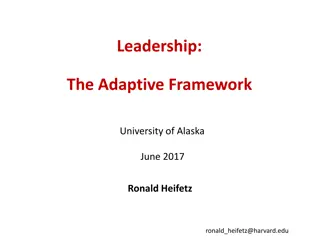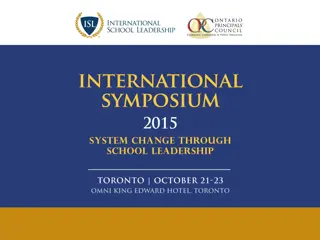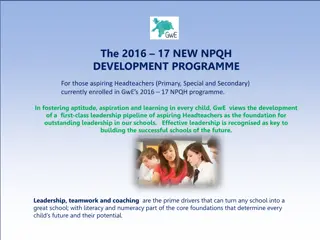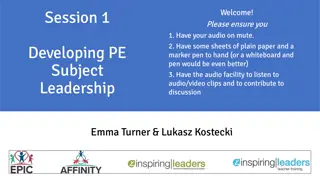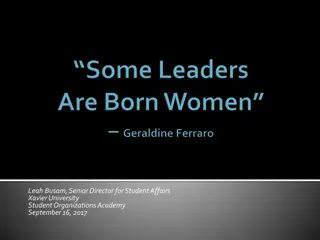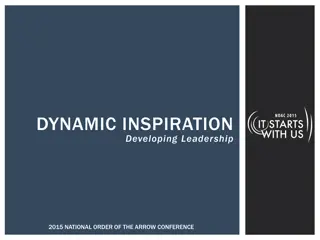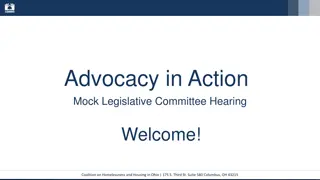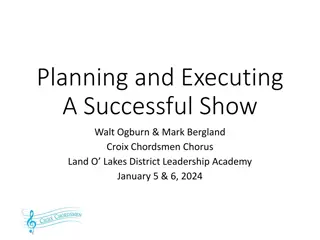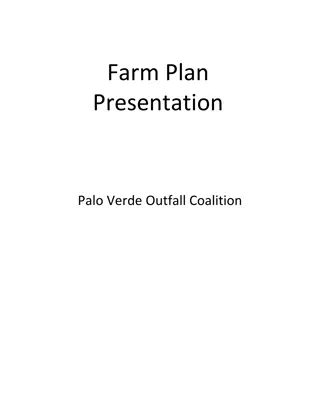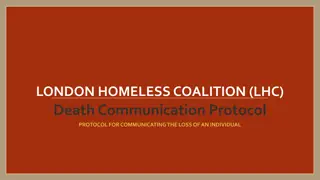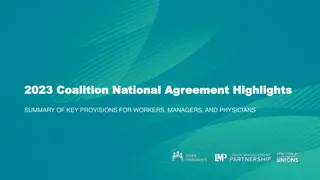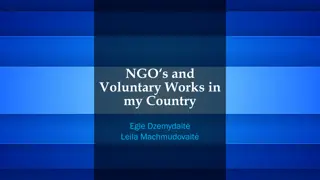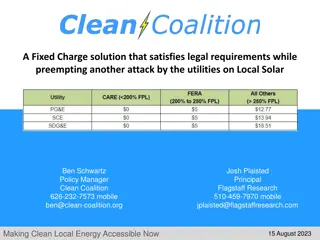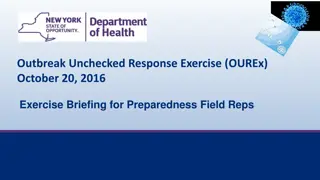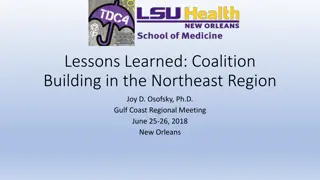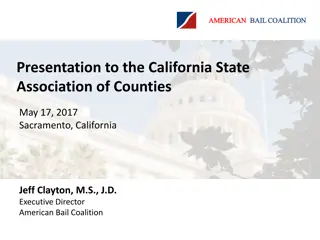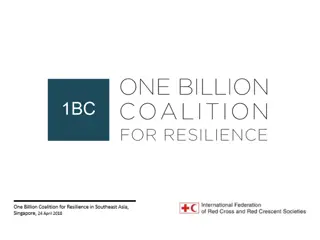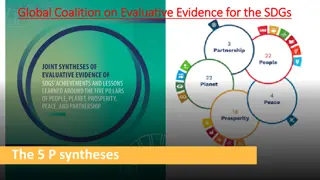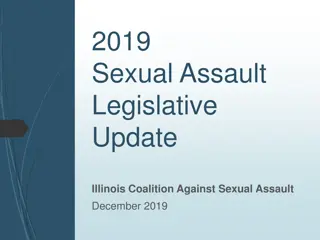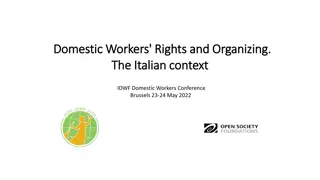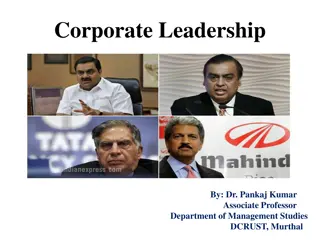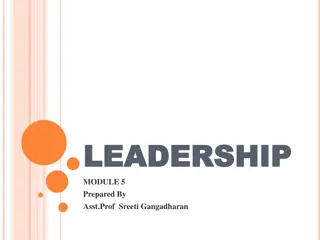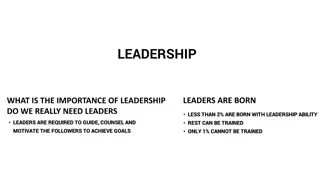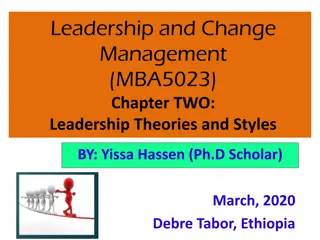Leadership and Organizing for Coalition Engagement
This content provides insights and guidance on leadership and organizing for coalition engagement, with a focus on defining new leadership concepts, identifying team needs, learning organizing tools, and accessing additional resources for coalitions and teams. It emphasizes essential skills for coalition leaders, the roles they play, and the importance of building trust, developing leaders, and engaging communities. The concepts of leadership and organizing are explored in the context of enabling others to achieve a shared purpose in the face of uncertainty.
Uploaded on Oct 08, 2024 | 0 Views
Download Presentation

Please find below an Image/Link to download the presentation.
The content on the website is provided AS IS for your information and personal use only. It may not be sold, licensed, or shared on other websites without obtaining consent from the author. Download presentation by click this link. If you encounter any issues during the download, it is possible that the publisher has removed the file from their server.
E N D
Presentation Transcript
Leadership for Organizing and Action Strengthening Coalition Engagement Virginia Falls Coalition Meeting November 13, 2019
Session Goals Define new leadership concepts for coalition- building Identify coalition or team needs Learn new organizing tools Identify additional resources for coalition and teams 2 VA Falls Coalition Meeting 11/13/19
Suggestions for Learning Avoid distractions (please silence your ring tone) Use resources during and after session Step-up/Step back Try on the skill Lean from each other 3
Attribution These sessions include content that was originally adapted from the works of Marshall Ganz of Harvard University and used in Leadership & Organization in Action Distance Learning Course offered by QIN-NCC in 2015. This content has evolved over the course of many iterations by Liz Pallatto, Joy Cushman, Kate B. Hilton, Chris Lawrence-Pietroni, Nisreen Haj Ahmad, Hope Wood, New Organizing Institute staff, and many others. 4
Your Role as a Coalition Leader Convener-Building trust through narrative, intentional relationship, and active meeting stewardship Leadership Developer-selecting and developing leaders equipped to empower local solutions to promote safe, coordinated care Community Organizer-regional approach to healthcare improvement through active engagement of providers/stakeholders across the entire continuum of care 5
Six Essential Skills for Coalition Leaders Inspiring a motivating vision Building relationships Engaging networks Structuring teams Strategizing collectively Learning in action 6
What is Leadership? Leadership is accepting responsibility for enabling others to achieve shared purpose in the face of uncertainty. A practice, not a position Authority is earned, not bestowed Focus is on developing others, not just yourself 7 VA Falls Coalition Meeting 11/13/19
What is Organizing? CHANGE Using the power to address the challenge the constituency is called to face POWER Building a community around that leadership to create power PEOPLE Recruiting and developing leadership 8
Mobilizing vs. Organizing Mobilizing Organizing 10
Diagnostic Checklist for Leadership Teams 13
A Compelling Purpose: A Compelling Purpose: Using the Organizing Sentence
Im organizing.WHO? Patients and Families Physicians Hospitals Practice managers Home health agencies Discharge planners Social workers Pharmacists Diabetes education centers Community organizations Faith-based organizations Long-term services and support organizations Advocacy organizations Associations
To do.WHAT? Measurable Aim(s) To engage 300 dual-eligible patients in practicing ABCS To recruit 500 dual-eligible beneficiaries for DSME classes To complete a pilot (PDSA) that engages 250 patients To engage 5 early adopters in each (of 10) hospitals to recruit 20 physicians from other departments (1000 total) to participate in a learning network To launch a nursing home collaborative with 75% of the nursing homes in my state (and a leadership team of 6-8 people) and meet at least 5 times To develop 5 community coalitions (with 4-6 leadership team members and 40+ stakeholders), each of which implements two interventions
Motivation Vision (Why?) 1.What is the urgent challenge? What is the intolerable condition that you want to end or to avoid? Why is the action urgent now? What is at stake? 2.What is the motivating vision? What does achieving success look like? 3.What is a plausible path forward? What could happen if you acted now? What is the first step we can take?
Example We, the ABC coalition of 40 local stakeholders, are organizing with local residents, healthcare providers, public health organizations and community-based organizations of the city s west end to improve food accessibility to residents with chronic diseases by building and strengthening local collaborations through a community participatory approach and by increasing awareness of social determinants in order to save lives, reduce hard and increase the capacity of the community to take action to advance the health of its residents. 19
The Right People The Right People Using the Mapping Actors Tool
Map of Actors Constituents are the people at the center of our work, the people whom we bring together. Leadership. Our leadership is derived from members of our constituencies. Supporters. Supporters are people whose interests are not obviously affected by our work but who may find it in their interest to support it. Competition. These are individuals and organizations with whom we share interests, but have different ideas about how to achieve our goals Opposition. In pursuing our goals we may find ourselves in conflict with the values and interests of other individuals or organizations 22
Dynamic, not Static: Noting the shifts Your Map will shift as you learn more... Your Aim Constraints Actors and Resources Opportunities In organizing, there are no permanent friends and no permanent enemies . Reference: ReThink Health & QIN-QIO National Coordinating Center, Leadership & Organizing in Action, 2015
Enabling Structure Enabling Structure Building a Snowflake Building a Snowflake 24
Why do we build a snowflake? To distribute the work among different groups To recruit and develop leadership To enable opportunities for people/organizations to creatively combine their resources. To build relationships 25 Footer
Intentional and Public Grounded in Shared Values Relationships are... Relationships are... Mutual Exchange of Skills and Resources Result in Growth and Learning Reference: ReThink Health & QIN-QIO National Coordinating Center, Leadership & Organizing in Action, 2015
Casual Private or Intimate Relationships are NOT... Relationships are NOT... Purely One-sided Transactional Reference: ReThink Health & QIN-QIO National Coordinating Center, Leadership & Organizing in Action, 2015
Why do we build Relationships? To Generate Resources 29
To Commitment From Compliance States a minimum performance standard that everyone must achieve States a collective goal that everyone can aspire to Based on shared goals, values and sense of purpose Uses hierarchy, systems and standard procedures for coordination and control Commitment to a common purpose creates energy for delivery Threat of penalties/sanctions/shame creates momentum for delivery Based on relational commitment IfI don t deliver this, I let YOU the group or community and its purpose down Based on organizational accountability If I don't deliver this, I fail to meet my performance objectives Reference: ReThink Health & QIN-QIO National Coordinating Center, Leadership & Organizing in Action, 2015
The One-to-One Meeting 1. Selection & Attention Whom shall I ask? Whom shall I ask? Use your actor s map to think strategically about whom you want to build relationships with Be clear about what you are looking for Explain how you got the person s name and common connections Reference: ReThink Health & QIN-QIO National Coordinating Center, Leadership & Organizing in Action, 2015
How do we build Relationships? Selection: Strong vs. Weak Ties Weak ties: People outside of your network Strong ties: People who share your network 32
How do we build Relationships Selection: What are our RESOURCES? 33
The One The One- -to to- -One Meeting One Meeting 1. Selection 2. Purpose Hello, I am here to... Hello, I am here to... Build a new relationship, deepen an existing relationship, or renew / redefine a relationship Clarify your interest and purpose in meeting Confirm the length of time to speak Project enthusiasm & appreciation Reference: ReThink Health & QIN-QIO National Coordinating Center, Leadership & Organizing in Action, 2015
The One-to-One Meeting 1. Selection 2. Purpose 3. Exploration Tell me why ? I care because... Tell me why ? I care because... Ask WHY questions to elicit & identify values values Explore shared interests interests Listen for resources resources and skills skills Tip: 80% listening / 20% sharing Tip: 80% listening / 20% sharing
The One-to-One Meeting 1. Selection 2. Purpose 3. Exploration 4. [Mutual] Exchange How can we be helpful to each other? Strategize about the type of exchanges of skills and resources that are beneficial to achieve shared goals
The One-to-One Meeting 1. Selection 2. Purpose 3. Exploration 4. Exchange 5. Commitment What are our next steps? What are our next steps? Frame commitment as opportunity Be specific about what we commit to (who will do what by when)
The One-to-One Meeting 1. Selection & attention 2. Purpose 3. Exploration 4. Exchange NO Commitment Reference: ReThink Health & QIN-QIO National Coordinating Center, Leadership & Organizing in Action, 2015
The One-to-One Meeting: Recap 1. Selection & attention 2. Purpose 3. Exploration 4. Exchange 5. Commitment
Tips for Successful 1:1 Meetings Reference: ReThink Health & QIN-QIO National Coordinating Center, Leadership & Organizing in Action, 2015
Building our Map of Actors Who are the people I need to engage to do this work? 41
Diagnostic Checklist for Leadership Teams 42 Footer
Review A Compelling Purpose Organizing Statement The Stories of Self, Us, Now Call to Action The Right People Mapping Actors The One-to-One Enabling Structure The Snowflake Meeting Structures & Tools 43 Footer
Great News! 1) HQI has received 5 more years of CMS funding to be Virginia s QIN-QIO 2) Our support for the 10 existing care transitions coalitions will continue 3) We need your help to establish additional coalitions in southwest and northwest VA 4) We are working with other community partners on population health topics that complement admission/readmission reduction
Community Health Priorities Chronic Disease Self- Management Opioids & Behavioral Health Care Patient Safety Transitions
Community Health Goals 1) Reduce hospital admissions and readmissions 2) Reduce ED visits and admissions by super-utilizers 3) Reduce potentially avoidable admissions, readmissions and super-utilization Care Transitions
Community Health Goals Patient Safety (ADEs) Chronic Disease Self-Management Opioids & Behavioral Health Medication reconciliation programs as part of transition services CKD screening at community meal sites Promoting safe medication use such as local prescription drug take-back days
Learn more and join us now CMS awarded HQI the states of Kansas, Missouri, South Carolina and Virginia We are branding QI work across these states as the Health Quality Innovation Network (HQIN) Visit us online at www.hqin.org to learn more and sign up!
FOR M ORE IN FORM A TION Call 877-731-4746 or visit www.hqin.org Carla K. Thomas, MS, CTRS, CPHQ Director cthomas@hqi.solutions 804-289-5318
